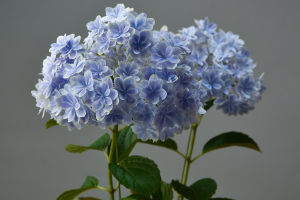The white-tailed deer (Odocoileus virginianus) is an iconic species native to North and South America. With its captivating beauty and significant ecological role, the white-tailed deer holds a special place in the natural world. Let's delve into the fascinating details of these graceful creatures.
White-tailed deer are known for their distinctive appearance. They have a reddish-brown coat during summer, which transitions to a grayish-brown hue in winter. Their name originates from the white underside of their tail, which is raised as a warning signal when they sense danger. Adult males, called bucks, typically have antlers that they shed and regrow annually.
These herbivores are primarily crepuscular, meaning they are most active during dawn and dusk. White-tailed deer are highly adaptable and can be found in a variety of habitats, including forests, grasslands, and even suburban areas. Their keen senses of smell, hearing, and sight aid in their survival, allowing them to detect potential predators and threats.
White-tailed deer play a crucial role in shaping their ecosystems. As herbivores, they contribute to seed dispersal and plant regeneration by consuming vegetation and spreading seeds through their droppings. They are selective feeders, often preferring leaves, twigs, and buds, which help control vegetation growth and maintain balanced ecosystems.
Furthermore, white-tailed deer are a vital source of prey for predators such as wolves, coyotes, and mountain lions. Their population dynamics directly influence predator-prey relationships and maintain the overall biodiversity of their habitats.
Breeding season, also known as the rut, occurs in the fall. During this time, bucks compete for mates by engaging in displays of strength and dominance. Males use their antlers to challenge rivals, often resulting in dramatic clashes. Successful bucks earn the opportunity to mate with receptive females, known as does.
After a gestation period of about six to seven months, does give birth to one to three fawns. These adorable offspring are born with a camouflaging coat of white spots, which helps them blend into their surroundings and avoid detection by predators. The bond between a mother and her fawns is strong, as she diligently nurtures and protects them until they become independent.
White-tailed deer hold cultural and economic significance for many communities. They are admired by wildlife enthusiasts and often feature prominently in artwork and folklore. Additionally, recreational activities such as deer hunting provide both sustenance and economic opportunities in various regions.
However, human activities, including habitat destruction and vehicle collisions, pose threats to white-tailed deer populations. Conservation efforts focus on preserving their natural habitats, managing population densities, and implementing measures to reduce human-wildlife conflicts.
White-tailed deer are enchanting creatures that captivate us with their beauty and grace. Their ability to adapt to diverse habitats, remarkable leaping abilities, and social behavior makes them a symbol of resilience in the natural world.
By protecting forests, grasslands, and wetlands, we can ensure the availability of suitable environments for these magnificent creatures. Additionally, raising awareness about responsible interaction with wildlife and the importance of conserving biodiversity is crucial for their long-term survival.


